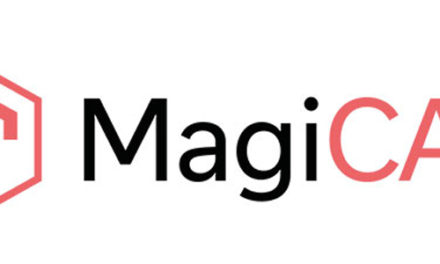University of Basque Country uses NX and Simcenter to enable students to tackle industrial and environmental challenges
Learning to design for the future
The University of the Basque Country (UPV/ EHU) is a Spanish public university of the Basque Autonomous Community. The university opened its doors in 1938 in Bilbao, Spain, and was initially made up of the faculty of economic and business sciences, medicine and sciences. The nautical school, the school of business studies and the technical schools of engineers were added later.
Currently, the university is spread out across 30 centers in the three provinces of the autonomous community: Biscay campus in Leioa, Bilbao, Portugalete and Barakaldo, Gipuzkoa campus in San Sebastián and Eibar and Álava campus in Vitoria-Gasteiz. It is the main research institution in the Basque Country, carrying out 90 percent of the basic research in that territory and benefiting the thriving regional industrial environment.
At teaching level, the mechanical engineering and the energy engineering departments use NX software and Simcenter STAR-CCM+ software, which are part of the Siemens Xcelerator portfolio, the comprehensive and integrated portfolio of software, hardware and services. Students in the project management and design department use NX for computer-aided design. This is a flexible and powerful integrated design, simulation and manufacturing solution that enables users to realize the value of the comprehensive digital twin. “Our students learn to design parts from early stages of their program, says Dr. Aitzol Lamikiz, professor for the mechanical engineering department at the Bilbao campus of UPV/ EHU. Using NX for 3D modeling is our students’ first step toward building a digital twin.
– Prior to their final year of the master studies, students in the mechanical engineering department need to decide whether to pursue a theoretical or practical path. Some students spend 2,000 hours working in the university’s machine tool unit for advanced training in machine tools and manufacturing technologies.
NX CAM for machine tool design
The machine tool unit offers specialized training focused on masters of science (MSc) engineering students wishing to deepen their knowledge of this sector in their last year. The training includes machinery and its elements, machining processes, design, automation, innovation, management and information technology (IT). Students use NX for  computer-aided manufacturing (CAM) to understand and generate computer numerical control (CNC) code for machine tools. They use the digital thread started during the design phase and continue weaving it through the fabrication process.
computer-aided manufacturing (CAM) to understand and generate computer numerical control (CNC) code for machine tools. They use the digital thread started during the design phase and continue weaving it through the fabrication process.
During their final master’s project, students drill deeper into the CAM software, researching its programming and simulation mechanisms. This also includes ways to add specific functionalities using the NX open application programming interface (API). – No matter what process students use for machining, using NX proves helpful with all of them, says Dr. Haizea González Barrio, assistant professor, lecturer and CAD/CAM modeling specialist at UPV/EHU. Using NX also extends to electric discharge machines and additive manufacturing equipment such as the machine tool unit’s 5-axis laser metal deposition machine.
UPV/EHU responds to an increasing demand for technical staff familiar with implementing CAD, CAM and computer-aided engineering (CAE) systems in the industry. Machine tool manufacturers are among the main drivers of the Basque Country’s export-oriented economy. They value graduates with expertise in complex manufacturing processes integrating multiple systems such as multi-axis machining or hybrid manufacturing.
Award-winning machining project
To add practical aspects to the scientific work, UPV/EHU carries out many of its master or doctoral thesis projects in close cooperation with the industry. The UPV/EHU Research Group on Advanced Manufacturing Technologies created an Aeronautics Advanced Manufacturing Center (CFAA) to develop a new relationship between research levels of advanced manufacturing technologies and machines. The CFAA uses commercial rather than academic licenses of NX so they can freely exchange designs and CNC programs with industrial partners.
The Spanish Engineer’s Society awarded a prize for the best master project for work on a reliable process for 5-axis milling of knee protheses, part of which González wrote for her master’s thesis. This project focused on manufacturing knee implant parts made of difficult-to-machine titanium alloys. The participating students developed machining strategies and selected the best tools for the project. Using NX for programming as well as virtual verification by simulation and writing their own post processors, they optimized the tool paths to achieve a surface quality that supports a long product life and hygiene.
As part of the project, they developed an advanced and inexpensive lubricant cooling system using carbon dioxide (CO2), a greenhouse gas available in abundance from other  industrial processes. It facilitates cryogenic machining that improves the machinability of titanium. As they used NX to develop the cryogenic lubrication system, they integrated the process with the comprehensive digital twin of the machining process, making it a parameter of the resulting parts.
industrial processes. It facilitates cryogenic machining that improves the machinability of titanium. As they used NX to develop the cryogenic lubrication system, they integrated the process with the comprehensive digital twin of the machining process, making it a parameter of the resulting parts.
UPV/EHU established an artificial intelligent manufacturing for sustainability (AIMS) program. They used CFAA as a pilot factory to promote new projects, courses and seminars on manufacturing and machine tool design using digitalization and artificial intelligence (AI).
Early familiarization with fluid mechanics
The UPV/EHU faculty of engineering offers three courses to familiarize pre-bachelor students with fluid mechanics. In their second year, students learn the basics of fluid mechanics. Then they move on to a course focusing on water and wind turbomachinery installations. In their fourth year, on their path towards the bachelor’s degree, they learn the operation and use of computational fluid dynamics (CFD).
– After completing this course, they can address and solve fluid mechanics problems by numerical methods using computer systems, says Iñigo Bidaguren, who lectures on energy engineering and fluid mechanics at UPV/EHU. “The applied course provides them with valuable CFD skills that are in high demand in various industries, from automotive and construction to energy.
During this course, they apply their theoretical knowledge using Simcenter STAR-CCM+. Although not limited to fluid behavior, using the software helps them focus on CFD to solve and analyze problems that involve fluid flows using numerical analysis and data structures. Students can gain advanced skills using Simcenter STAR-CCM+ by using supplementary tutorials provided by Siemens solution partner, ATS Applied Tech Systems. – Using Simcenter STAR-CCM+ helps us cover all of our simulation requirements, says Bidaguren. It includes CAD functionality beyond what is required to import the geometry, we are not using any other software.
Improving sustainable energy generation
Building a sustainable energy system using renewable energy sources will play a crucial role in decarbonization aimed at reducing global warming and the impacts of climate change. As the Basque Country is located at the Bay of Biscay with its wuthering seas, the vast potential of wave energy is an obvious subject for UPV/EHU to study. As the harsh conditions offshore represent major technological challenges, there is a demand for advanced knowledge in scientific and technological fields, and the industry needs specifically trained professionals.
 UPV/EHU collaborates with public and industrial partners to develop specialists with the required skills to accomplish these technological challenges. In a bachelor’s degree final project, a UPV/EHU student did research on an oscillating water column system used to generate electricity from sea waves by displacing air in chambers to drive wind turbines. – The student used Simcenter Star- CCM+ to model the power plant’s wave core chamber and to run various simulations, says Bidaguren. He verified the simulation results with comparison tests in a large water tank at the laboratory.
UPV/EHU collaborates with public and industrial partners to develop specialists with the required skills to accomplish these technological challenges. In a bachelor’s degree final project, a UPV/EHU student did research on an oscillating water column system used to generate electricity from sea waves by displacing air in chambers to drive wind turbines. – The student used Simcenter Star- CCM+ to model the power plant’s wave core chamber and to run various simulations, says Bidaguren. He verified the simulation results with comparison tests in a large water tank at the laboratory.
In close cooperation with universities in Ireland, France and Norway, UPV/EHU offers an Erasmus Mundus Master’s in Renewable Energy in the Marine Environment (REM PLUS). The master’s program provides students with skills to help them develop safe, efficient and reliable marine energy generation plants. During this course, REM PLUS students write a master’s thesis on generating electricity from wave power using an overtopping device. In cooperation with a Spanish engineering firm specializing in renewable energy, other MSc students used Simcenter STAR-CCM+ to do CFD simulation work to develop floating foundations for offshore wind turbines.
– We have a future-oriented subject serving a good cause, combined with fascinating digitalization and software skills sought after in the industry, says Esteban. No wonder plenty of students line up to join our courses.







